Post by mshackleton on Aug 14, 2012 6:45:05 GMT -5

Catalogue No.: CB35036
Scale: 1 35
Reviewed by: Michael Shackleton
Bronco continue to ring the changes with a very unusual subject that many thought would never see the light of day as a mass-produced plastic injection kit. Personally, I’m very happy to see the 43M Zrínyi II assault gun (not 40/43M as Bronco call it!!) hit the model shop shelves. It fills a gaping hole in what is on offer to Axis modellers and shows that Bronco are thinking a little out-of-the-box in picking their subjects.
As very little is known about this vehicle, and most people must be curious about this comparatively rare beast, this is what I have been able to piece together from various sources.
Introduction
Zrínyi II assault gun was of Hungarian origin and designed from their Turán medium tank family during World War 2. Hungary joined the Axis powers in 1940 and its military would go on to participate in the ensuing large-scale land invasions of both Yugoslavia and the Soviet Union in 1941. The Hungarians were not blind to the successes of the German assault guns built from modified Panzer tank hulls such as the StuG III and Stug IV.
Following the disastrous results of Hungarian armour at the hands of Soviet medium and heavy tanks, the Hungarian authorities looked to similar assault gun-based developments of their own. Plans for this proposed assault gun were drafted by Dipl.Eng. Ernö Kovácsházi, chief designer of the Hungarian WM armoured fighting vehicle section. The manufacturer was Manfred Weisz of Cspel where production ran from April 1943 July 1944. The name Zrínyi stemmed from the Hungarian hero Nikolaus Graf Zrinyi, killed in combat against Turk forces in 1566. Selecting the indigenous Turán medium tank as a starting point with a fixed superstructure added to the basic hull, chassis, engine and running gear, this design presented a strong, accurate gunnery platform. It was cheaper and quicker to produce than comparable tank systems with fully traversing turrets. Against the concept, the entire tank has to turn in the direction of fire because the fixed superstructure limited traverse. However, such vehicles could mount larger-calibre guns and have a lower silhouette, and would go into battle alongside combat tanks, so the limitation was negligible.
Technical stuff
The Zrínyi II had a crew of four made up of the driver (right front), commander (right rear), gunner (left front) and loader (left rear). The operating weight was listed at 19,600 kg to 21,600 kg with a length of 5.68 m, a width of 2.89 m and a height of 2.33 m. The engine was a Manfred Weisz V-8H water-cooled gasoline engine of 260 horsepower mated to a transmission with six forward and six reverse speeds. Range was 220 kms with a 43 kph road speed.
To accommodate the main armament, the hull of the Turán tank was widened by 44 cm. The front plate was 75 mm thick and the howitzer was mounted in a massive ball mount. The sides were 25 mm thick and the roof was 13 mm thick.
The 105 mm howitzer used separated ammunition and two types of shell. The 38/33 M high explosive shell weighed 15.04 kgs and had a muzzle velocity of 471 m/s. The 42 M anti-tank shell had a weight of 17 kgs and a muzzle velocity of 444 m/s. The rate of fire was six rounds per minute. The vehicle typically carried fifty-two rounds, but this could be increased to ninety to ninety-five rounds.
There were two access hatches for the driver and the gunner at the front, and a two-part hatch in the back for the commander and the loader. In the roof of the fighting compartment were five rotating 43M periscopes, two each for the gunner and the driver, and one for the commander. There was a small opening in the rear for firing signal flares. Although the gun was planned to use direct aiming, it was never introduced. The commander had an R/5a radio set at his disposal on the right rear wall. There was no close-defence machine gun, but the crew was equipped with four sub-machineguns and hand grenades. A planned mount for an anti-aircraft machine gun was never realised.
Development
From the outset, the Hungarian Army required two versions of the assault gun concept. Zrínyi I was planned to be a tank hunter armed with a 7.5 cm tank gun developed from the Turán III tank. The thickness of the front plate was increased to 100 mm, but the rest of the hull was identical to Zrínyi II. The prototype was built from the unarmoured prototype of Zrínyi II and was not completed until late 1943. At this point, the type was tested and accepted for service with serial production set to begin in mid-1944 as the 44M Zrínyi I. The Army ordered 110 vehicles, but production did not start.
The second version (the first one built), Zrínyi II, had a 105 mm field howitzer for use in the infantry support role. The mild-steel prototype was built by MAVAG Dios-Gyor. The prototype was taken to the artillery range at Hajmasker in western Hungary where it went through tests between 12 December 1942 to 20 January 1943.
Modifications included the addition of side skirts or köténylemez (the Hungarian term for Schürzen) to deflect hollow charge anti-tank weapons.
Zrínyi II was accepted for serial production as the 43M Zrínyi 105, to begin immediately. Of the 140 vehicles ordered, only seventy-two were manufactured.
Into Action
In 1943, eight new Hungarian assault gun battalions were raised. Each battalion had a planned strength of three companies with one command and nine assault guns for a total of thirty vehicles. The assault gun battalions were slated to obtain Zrínyi II, but only four received them because of the insufficient vehicles produced, numbers being made up by StuG IIIG and Jagdpanzer 38(t)s.
The Zrínyi II went to war with the 1st Assault Artillery Battalion in April 1944 in Galacia, and its first recorded use was July 14th 1944 at Ottynia, eastern Galacia. The vehicles fared well during the subsequent fighting, but they lacked any real anti-tank capacity.
In July 1944, the Hungarian 2nd Armoured Division covered the retreat of the First Army to the speedily built Hunyadi defensive position in the Carpathian Mountains. When this line was broken in September, fighting was now on Hungarian soil. The 2nd Division took part in the fierce battle of Torda from 13th September to 8th October, together with the 10th Assault Artillery Battalion equipped with Zrínyi IIs. Though both units fought with distinction, the Soviet superiority at this stage was overwhelming, and the battered units had to be withdrawn on 23rd September. The 2nd Battery had twenty Zrínyi IIs, while the 1st Battery had ten Zrínyi IIs.
On 30th October 1944, the bloody battle for Fortress Budapest started. The siege lasted four months. In the town, the remnants of the 2nd Armoured Division were trapped. This unit consisted of parts of the 6th Assault Gun Battalion and remnants of three other Assault Gun Battalions with a mix of Zrínyi IIs and StuG IIIs. These units surrendered with the city on 13th February 1945.
After the war, the Czechoslovak Army inherited twelve Turáns and two Zrínyi IIs, left behind by Hungarian troops. Only one Zrínyi II survives today at the Kubinka Tank museum outside Moscow.
Hungarian armour units using Zrínyi (with thanks to www.sead.us/Zrinyi_History.html)
Below is a summary of military units by number of the Rohamtûzer Osztály (RO - Assault Gun Battalion) that used Zrínyi II:
1st Budapest Rohamtüzer Osztály
Fully equipped with Zrínyi II in August 1943, in action in Galacia (Poland) during July 1944 and in August-September 1944 the 3rd Üteg (battery) of the 1st RO transferred its remaining vehicles to the Üteg of the 10th Szigetvar RO, 7 serviceable out of 9 available. All Üteg of the 1st RO surrendered or were destroyed in Budapest.
10th Szigetvar Rohamtüzer Osztály
Equipped with Zrínyi and a few StuG IIIG (StuG are possible when they were surrounded in Budapest and the RO that were encircled were transferring equipment to where needed etc.), saw action at Torda and Baracska in December 1944. The unit later surrendered or was destroyed in Budapest.
24th Kassa Rohamtüzer Osztály
In action in Slovakia, destroyed its remaining Zrínyi in Bratislavia 1945 (numbers not known).
25th Kolozsvar Rohamtüzer Osztály
The unit had some Zrínyi II and StuG IIIG initially with Jagdpanzer 38(t) issued late in 1944. The unit was in action between September and October 1944 at Del-Erdely near Torda having four Pak 40 on strength in October 1944. A strength report for this unit indicated 38 assault guns of which six were operational on 15 March 1945, but German source documents do not indicate the type of assault gun at this point in time for Hungarian units.
Other formations:
Billnitzer csoport
Formed from the depleted 1st Budapest RO where Zrínyi crews fought on foot as infantry with the 1st Üteg of the 24th Kassa, the unit became trapped in Budapest during February 1945 where it surrendered.
It appears that all remaining Zrínyi in the remaining RO’s were transferred to the 20th and 24th RO during January 1945. Whether any were operational at the time is questionable.
The Model
Upon opening the box you are presented with a dozen or so polythene and cellophane bags with thirteen sprues containing the majority of the parts. Smaller bags contain eighteen sprues of individual link tracks, the hull tub, the hull top, MG with bipod and ammo box, string, clear parts, four photo-etch frets (with polythene protection on both sides) and a sheet of decals. All of the sprues have identification letters and part numbers. The contents are:
Sprue A - track guards, transmission covers, tools, various hooks and fittings, front suspension mounts (slide-moulded), smoke candle rack, exhaust pipes.

Sprue B - some hull plates including superstructure front and main gun ball mount, crew hatches, tool box and various small fittings.

Sprue C (two off) - road wheels, front and rear sprockets, suspension leaves and other running gear parts.

Sprue D - alternative superstructure front and main gun ball mount, return rollers, driver’s switch box/instruments, more small fittings.

Sprue E - driver’s controls and seat.

Sprue F (two off) - side skirt supports, spare road wheel, periscope guards.

Sprue G - main gun with slide-moulded muzzle, gun cradle and other main armament parts.

Sprue G1 - clear parts (periscopes and headlight lenses).

Part H - hull bottom tub.


Sprue Ha - two fuel drums.
Sprue Hb (two off) - eight jerry cans.

Part I - upper hull.


Sprue J (18 off) - individual track links.

Sprue Kd - MG34 machine gun with bipod and ammo box.

P - photo-etch fret with short side skirts.
Pa - photo-etch fret with perforated side skirts and hanging brackets, track guard extensions.

Pb - mask for skirt markings.
Pc – jerry can inserts.
Length of string for tow rope.

Decals - one sheet, with three vehicle options.

Print of box top artwork without any branding or descriptions (taking a leaf out of AFV Club’s book).
Instructions
The instructions are presented as a 24-page, full colour, A4 stapled booklet. Each step is illustrated in a logical order with beautifully clear and large black and white line drawings. Colour CAD illustrations are included in some steps for clarity where necessary. There are 33 steps in the construction process and I can’t imagine many problems being encountered other than mounting the large perforated side skirts using their numerous brackets.
The only building options are:
Vehicle with short side skirts mounted directly to the track guards.
Vehicle mounting perforated side skirts.
An alternative superstructure front plate is supplied with a circular cover on the left, which presumably, is a cover for an unused machine gun ball mount. However, there is no explanation in the instructions, the colour options don’t cover this and photos of the vehicle fitted with this are very rare.
Alternative driver’s visors, comments as above.
Headlight with clear lens or blackout.
Additional accessories are supplied for two fuel drums, eight jerry cans and a ground mounted MG34 machine gun.
First Impressions
The overall quality of the parts is very, very good with excellent moulding including some items being slide-moulded. There is a virtual absence of ejector marks apart from inside the hull top and hull tub and the underside of the track guards. All others will be hidden away during construction. The mudguards have a taper making them appear commendably thin. Flash is almost non-existent. There is no sign of warping and no sink marks at all. Slide-moulding has been used as noted above and also on the rear hull top that has lovely open slats on the engine deck grille. Basic interior detail is included for the driver’s station and the main armament which is probably enough to fill the cavernous hole when viewed through the roof hatches and single rear hatch. Even the interior of the superstructure is detailed with riveted frames though they will be all but impossible to see when completed. Engine deck hatches are all separate leaving the road clear for an after-market power train.
This is state-of-the-art moulding as we have come to expect from recent Bronco releases.
Construction
Construction is broken down into 33 steps. The build starts - unusually for an AFV - with the interior. Anyone would think that this was an aircraft kitJ! In Stages 1 through 5 the 105 mm gun is built up starting with the gun itself. The barrel has been slide moulded complete with the perforated flash suppressor. One downside of this, though not too obvious, is the fact that the holes are perpendicular to the side and to the top. Slide-moulding only works on three axes, all at 90° to each other. It isn’t clever enough to cope with 360°. Therefore, the holes not at right angles to the sides and top show the thickness of the plastic because they are angled. Difficult to explain until you see it, but some careful drilling will sort it out. This is really nit-picking though.

In stage 2 the gun is fitted into its recoil carriage where it can be shown at full recoil if desired - but there are no toy-like springs in this kit as Bronco did with their Chaffee. The gun is then fitted into its trunnions with a couple of elevation gears and hand wheel being added in stage 4. Stage 5 adds a recoil guard and the whole gun is then fitted into a mount which allows it to traverse slightly. Finally the ball-like shield is added to the front of the gun.
A problem with the alternative superstructure front plate crops up in stage 6. I have only been able to find three photos of Zrínyi’s with the circular plate on the left side. The parts needed for this are D5 and D6. Photos of the plain front far outweigh this one and there is no correlation between the marking options and this alternative plate. Another lack of clarity is exactly how the whole gun assembly fits behind the front plate. All we are shown is a single arrow showing the gun assembly going through the hole in the front plate. I guess it will be more apparent when it is built up and brought together. It’s not until you examine the floor of the hull tub that you realise that the complete gun assembly must sit on two raised girders next to the driver’s seat position.


A nice touch with this kit is some partial interior detail, just enough to see if you leave the hatches open. Stages 7 and 8 take you through the addition of the driver’s seat which itself is four parts, plus foot controls, gear lever and steering levers which all slot into the tub. Also at this stage the lower hull front plate and tow hooks are added to the blank face on the hull tub.
Now we come to that complex suspension in stage 9, normally the first step when building an AFV. The system is very similar to that used on the Pz35(t) and the Semovente series of Italian vehicles. There are four main suspension units. Each suspension unit has two bogies each with four road wheels. Each four-wheel bogie unit is made up from two arms which collect the four road wheels together. These units hinge on their central axis to arched C-shaped units which contains three parts including rollers that contact with the large leaf springs in the next step. The completed bogie units are then pivoted together in a hull mount. This mount contains the two sets of springs and four angled bump stop arms. You have to make four of these units - 32 parts each! I nearly forgot to mention that the road wheels have tiny markings on their rubber tyres, so small they are unreadable except under a powerful magnifying glass - but they are there!

The return rollers are much easier but each still contains six parts and you have to build ten of them. We are still not finished as there are two track tension rollers which are between the front idler sprocket and the first road wheel bogie unit. These are built from seven parts each in stage 10.
Stage 10 is concluded with a bit of a side step from the running gear. This details the front glacis plate onto which a shaped bar is mounted which keeps spare track links in place – six on the right and three on the left. 216 links are provided so there should be 14 spares. This is not mentioned in the instructions. This bar is detailed with two small wing nuts and a couple of tiny etch brackets.
All of the suspension can, with care, be made to work just like the original and the instructions call out where you should not glue if you want it to work.
In stages 11 through 14, the running gear is completed by adding all of the bogies/return rollers/tension rollers to the hull tub. In addition, the drive sprockets are added at the rear and the idlers (which are also sprockets) at the front. A pair of photo-etch mud scrapers have to added to each hull side when fitting the idlers. Don’t get the sprocket outer faces mixed up as they are similar – the drive sprocket has a central nut, the idler sprocket doesn’t. The previously detailed glacis plate is also added to the hull tub.
The tracks can now be built in stage 15 and the instructions tell us that 101 individual links need to linked together around the running gear to complete a single side. The instructions tell you that no glue is needed, but though they click together quite nicely when they are cleaned up, they are NOT going to stay together. For safety, I’d build some short runs of several links and then run some liquid cement across them when they are in place.
The lower hull assembly can now be completed in stage 16 by adding the track guards to each side, each of them built up from three sections.
Next, we come to the hull top. As I mentioned above, the interior of the fighting compartment is detailed with riveted frames under the roof panels. In stage 17, numerous parts are added to this shell, the most notable of which are engine vent doors very similar in principle to those fitted to the German Panzer IV. These are supplied as one strip of four doors per side. If you want to model them open then they will have to cut with a sharp knife (which the instructions do bring out). They hinge along the bottom edge and most wartime shots I’ve seen show all four open together, although sometimes just the central pair are open. Of course, any combination is possible.
Stage 18 is the first of the fiddly stages. Here the instructions ask you to trim off rivets from sprues and, firstly, add 14 rivets to the walls of the engine deck grille and then six rivets per side to rear facing sides of the engine deck. Stage 19 adds hatch hinges, rear lights, tools and aerial mount, and tubular guards that cover the aforementioned engine vent flaps. These will take some care to remove from the sprues, but are very nicely moulded (as is the rest of the kit). Another fiddly step will be forming eight tiny pull hoops that have to be formed from brass strips (parts P18) which are added centrally to each vent door. Four lifting hooks (part D24) are added to the superstructure roof but only one is mentioned. I have to admit that I didn’t notice these until a later stage, so they could have been made clearer in the instructions.
In stage 20, the rear hatches are added, one of which has three handles that need adding on both sides. Three rotating periscopes have to be built by adding the clear periscope itself inside an armoured ring with a photo-etch handle on the bottom. These are then added into the roof panels. More tools are added as well as mounts for two jacks and a pair of exhaust pipes. In stage 21 a further periscope has to be built and added through the gunner’s hatch plus handles added into this and the driver’s hatch.
All of the hatches are then added to the crew compartment and the engine deck in stage 22. The instructions show how the doors should be posed in their open positions. In stage 23 the main gun and superstructure front plate can finally be introduced into the hull tub but, as I mentioned before, it’s exact positioning is none too clear. I’d be tempted to at least position it using the hull top, or even glue it to the hull top first to avoid any nasty mistakes. Before adding the hull top to the bottom, the driver’s vision slot has to be added from the inside before a choice of flaps is added to the outside. One visor flap is plain (part D14), the other has three rivets across it (Part D13 - which I cannot find in any photos of the real vehicle). Once again, there is no correlation between the marking options and the alternative visor flaps. A couple of control panels are also added next to the driver’s position before closing up. Two jacks are built from five parts each and mounted at each rear corner.

Stages 25 to 27 deal with the final stages of the main construction. Headlights (with or without clear lenses/blackouts), jacking blocks, a fire extinguisher, horn, spare road wheel, rear plate tool box and smoke candles, convoy light and more brackets for the jacks, are all added.
Now we come to the two major options - with or without perforated side skirts. Option 1 is by far the easiest. First of all, and common to both options, a large girder must be added bridging the two main suspension units. Zrínyi normally operated with shallow side skirts. These are provided in etch brass. First a narrow strip (with bolt detail etched on) is added to the top edge of the track guards. Then the skirts themselves are added on the sides. That’s it! Apart from adding the tow cable - which is detailed on the last page of the construction stages - Option 1 is complete and ready for paint.
Option 2 is far more complicated. Before adding the perforated skirts, all sorts of brackets and hangers have to be fitted, but first we must add some track guard extensions. These are brass. Holes are provided in the brass which locate on tiny pips UNDER the track guards - a very thoughtful addition. Then plastic hangers have to added along the top of the track guards (coloured blue in the instructions) and on top of the suspension girder (coloured red). Now, 16 brackets (per side) have to be formed from brass and carefully stuck on the reverse side of the skits.
The skirts are very nice. They are supplied in single pieces. On the vehicle they were four pieces per side. It will be very easy to separate them with a very sharp knife and straight edge for a more realistic pose or if you want to leave some off. Photos show up to three of them missing in action. Note that the raised edge goes on the outside. Small non-perforated panels show you where to glue the brackets. If all goes well, the skirts should hang just like the real thingJ.
The final stages show construction of the accessories provided - the MG34, fuel drums and jerry cans. I have seen a photo of a fuel drum and an MG34 being carried on the rear deck, so these accessories are just right.
Decal options
These cover three alternatives:
The first two options are described as being painted in olive drab overall. References for Hungarian colours are difficult to find, but olive green might be a better description. I found a reference on The Flames of War website that recommended Vallejo 890 Reflective Green as a match. Bear in mind that the Hungarians were German allies, so maybe they used German colours?
1st Battery, 1st Assault Gun Battalion with short side skirts.
3rd Battery, 1st Assault Gun Battalion with perforated skirts. A nice touch here is that the markings are provided as etch masks so that they can be sprayed onto the skirts. Waterslide decals would not be an option here.
3rd Battery, 1st Assault Gun Battalion in three-colour sand/red brown/green scheme.
Competition
Surprisingly, there seem to be three other kits of Zrínyi II in 1.35, all resin. The kit from Botond includes a set of Fruilmodellismo tracks. Although it seems to be a very good kit, it is also very expensive.
A second kit is available from a company called CZ Kolinec who produce both Zrínyi I and II. These have been reviewed recently in Model Military International and Steel Art – see references below.
Apparently Commanders Models in the USA also had one in their catalogue but is no longer available.
Conclusions
Bronco continue to impress. Not only is this one of the best plastic models I have seen, it is also a very brave and imaginative subject. I see that it will be followed by Zrínyi I, but as only one mild steel prototype was built which never saw action (as far as I know), I wonder what it’s appeal will be.
Like their Chaffee, all I can say is that this is a very fine model indeed. There is a lack of clarity in some stages of the instructions but I don’t think this will impede the average modeller. Let’s hope that Bronco follows it with a model of Turán I. Or Turán II! Or Turán III!
It is not a shake-the-box kit. But it is not overly complicated other than a handful of fiddly stages. It is not so complex that it will put off any competent builder. Take your time, and you will be well rewarded with the result. It is extremely well detailed. It offers some of the best moulding you will see. All of the rear deck panels are separate parts making things easy for after-market people to come up with an engine and transmission. The kit has open hatches, all of which have interior details. A more detailed interior is something else the after-market could supply. There are many other nice touches, as already detailed above. This kit does not come with any crew figures.
The review model was kindly supplied by Bronco Models.
References
There isn’t much out there I’m afraid.
Magyar Steel, Csaba Becze, Mushroom Model Magazine Special 4101, ISBN 9788389450296.
Military Modelling (Vol.29 #4 April 1998) A build article by Steven Zaloga of the Commanders model.
Steel Art magazine, no.101.
Model Military International no.72, April 2012.
Modell és Makett Extra magazine 2nd edition (has Zrínyi II on the cover) and 5th edition.
Magyar Warriors Volume 1: The History of the Royal Hungarian Armed Forces 1919-1945, Dénes Bernád, Charles K. Kliment, Helion & Company Ltd. ISBN 9781906033880. Due for publication October 2012.
Web Reference:
forum.axishistory.com/viewtopic.php?t=5163
mailer.fsu.edu/~akirk/tanks/hun/Hungary.html
www.bibl.u-szeged.hu/bibl/mil/ww2/kepek/tanks/rlg/zrinyi.html
www.freedom.hu/IIvh/Fegyverek/Magyar/zrinyi.htm











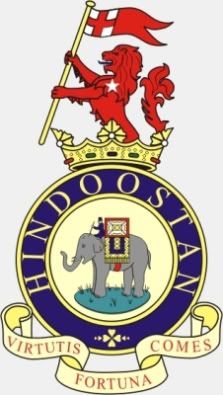


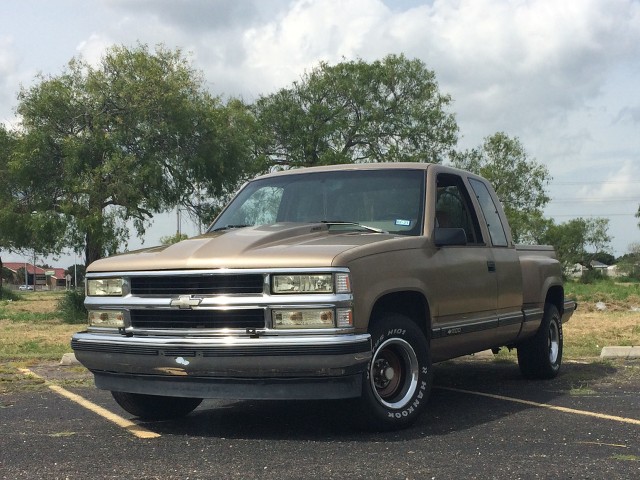
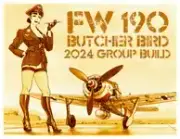
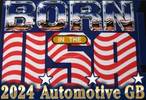
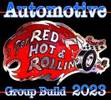
 interesting subject ... Well done mate
interesting subject ... Well done mate 